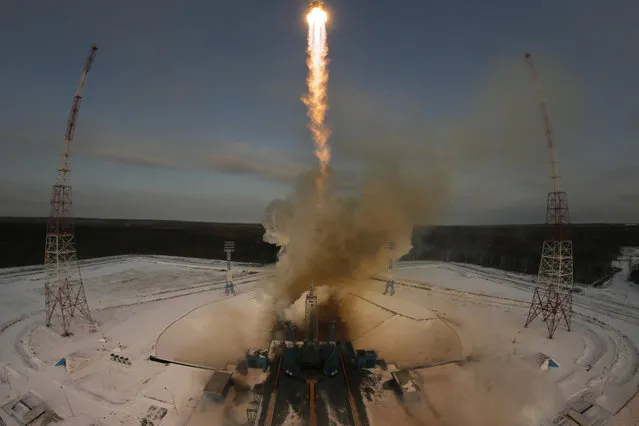
A Russian Soyuz 2.1b rocket carrying the Meteor M satellite and additional 18 small satellites, lifts off from the launch pad at the new Vostochny cosmodrome outside the city of Tsiolkovsky, about 200 kilometers (125 miles) from the city of Blagoveshchensk in the far eastern Amur region, Russia, Tuesday, November 28, 2017. (Photo by Dmitri Lovetsky/AP Photo)
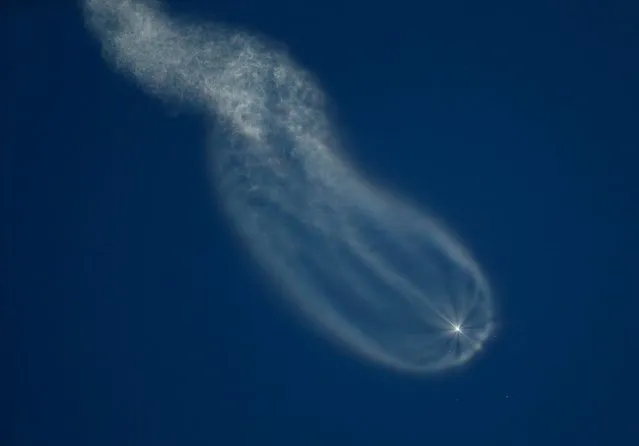
The Soyuz MS-05 spacecraft carrying Italian astronaut Paolo Nespoli, cosmonaut Sergey Ryazanskiy and NASA's Randy Bresnik sheds its four boosters after blasting off to the International Space Station from the launchpad at the Baikonur Cosmodrome on July 28, 2017. (Photo by Shamil Zhumatov/Reuters)
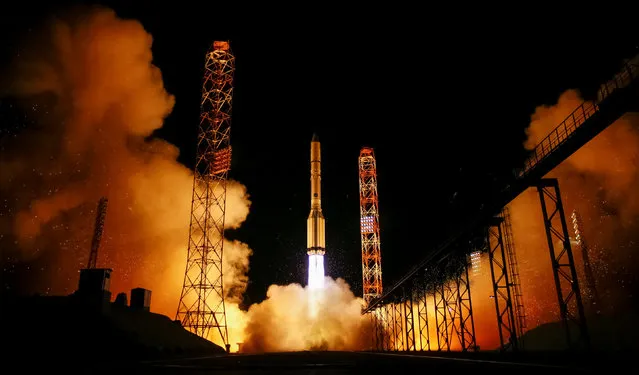
The Proton-M booster blasts off with the Spanish Hispasat’s Amazonas 5 communication satellite at the Baikonur Cosmodrome, Kazakhstan September 12, 2017. (Photo by Shamil Zhumatov/Reuters)
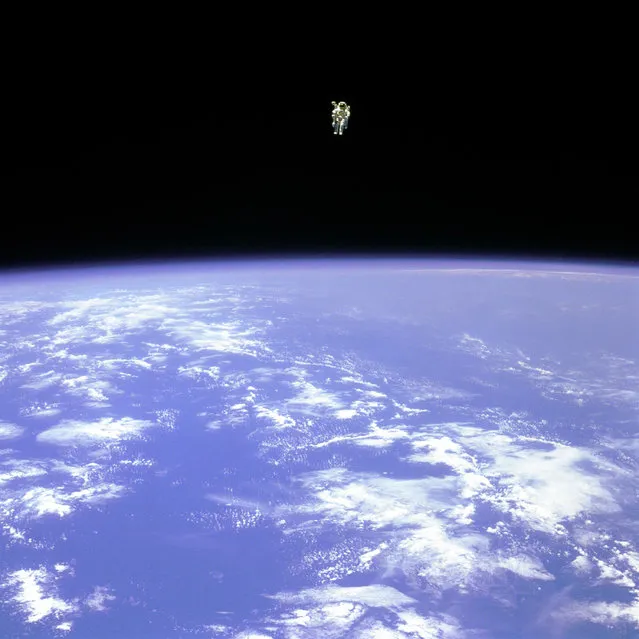
In this February 12, 1984 photo made available by NASA, astronaut Bruce McCandless uses a nitrogen jet-propelled backpack, a Manned Manuevering Unit, outside the space shuttle Challenger. The Johnson Space Center says McCandless died Thursday, December 21, 2017 in California. (Photo by NASA via AP Photo)
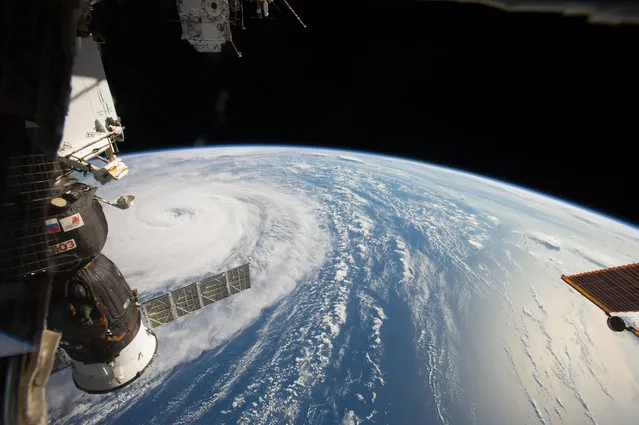
NASA astronaut Randy Bresnik photographed Super Typhoon Noru on August 1, 2017, as the International Space Station passed overhead. He shared images of the massive storm on social media, writing, “Super Typhoon #Noru, amazing the size of this weather phenomenon, you can almost sense its power from 250 miles above”. (Photo by Randy Bresnik/NASA)
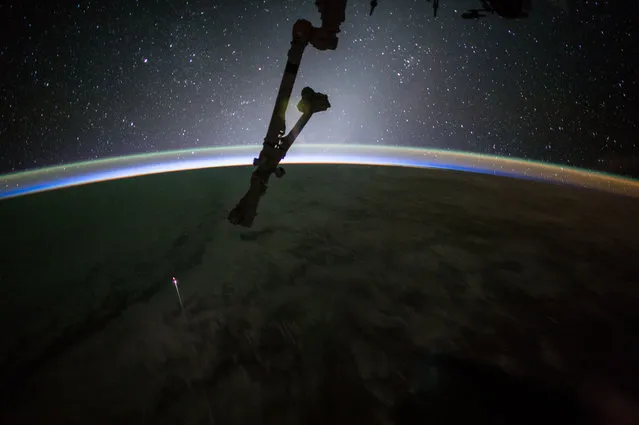
NASA astronaut Jack Fischer photographed the SpaceX Dragon capsule as it reentered Earth's atmosphere before splashing down in the Pacific Ocean west of Baja California at 8:12 a.m. EDT, July 3, 2017. Fischer commented, “Beautiful expanse of stars-but the “long” orange one is SpaceX-11 reentering!”. (Photo by NASA)
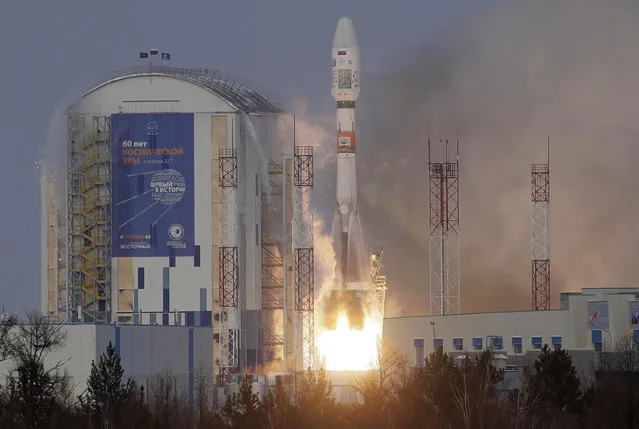
A Russian Soyuz 2.1b rocket carrying Meteor M satellite and additional 18 small satellites, lifts off from the launch pad at the new Vostochny cosmodrome outside the city of Tsiolkovsky, about 200 kilometers (125 miles) from the city of Blagoveshchensk in the far eastern Amur region, Russia, Tuesday, November 28, 2017. (Photo by Dmitri Lovetsky/AP Photo)
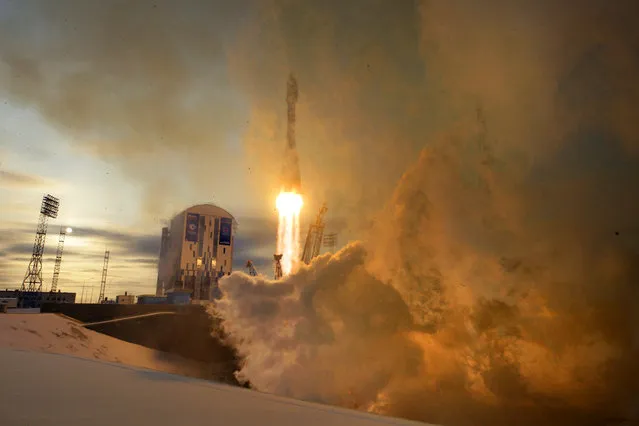
A Russian Soyuz 2.1b rocket carrying the Meteor M satellite and additional 18 small satellites lifts off from the Vostochny cosmodrome outside the city of Tsiolkovsky, Amur region, Russia, 28 November 2017. (Photo by Maxim Shipenkov/EPA/EFE)
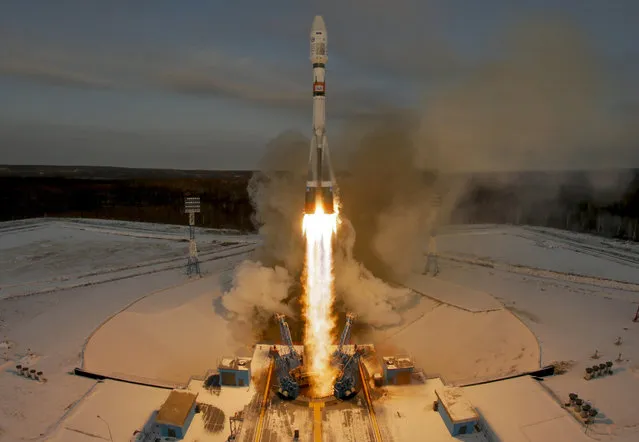
A Russian Soyuz 2.1b rocket carrying Meteor M satellite and additional 18 small satellites, lifts off from the launch pad at the new Vostochny cosmodrome outside the city of Tsiolkovsky, about 200 kilometers (125 miles) from the city of Blagoveshchensk in the far eastern Amur region, Russia, Tuesday, November 28, 2017. (Photo by Dmitri Lovetsky/AP Photo)
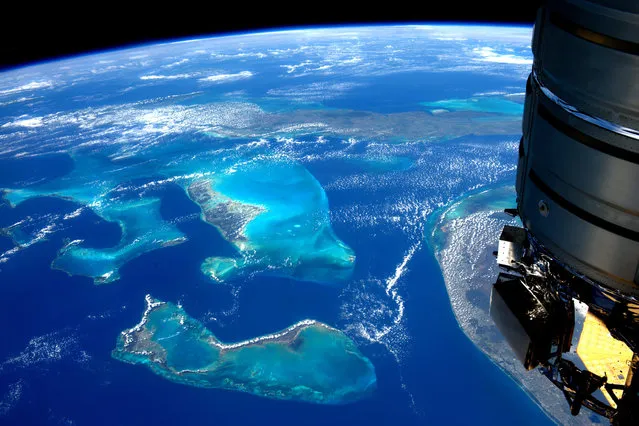
French astronaut Thomas Pesquet posted this photo to his Flickr page from the International Space Station on June 3, 2017 with the simple caption, “Bleu”. (Photo by ESA/NASA)
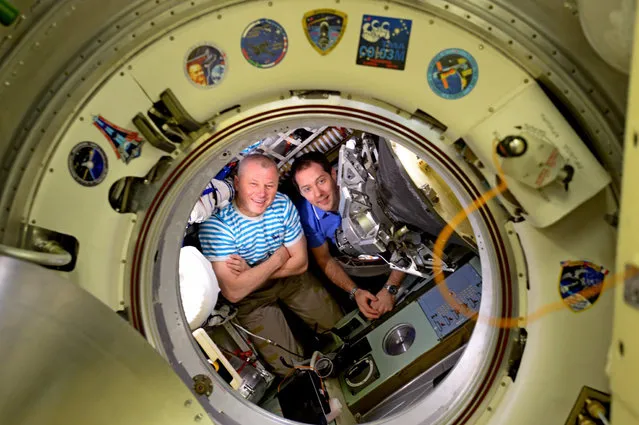
Russian cosmonaut Oleg Novitskiy, left, and French astronaut Thomas Pesquet sit in the Soyuz space capsule as they prepare for their return home from the space station, June 2017. (Photo by Jack Fischer/NASA)
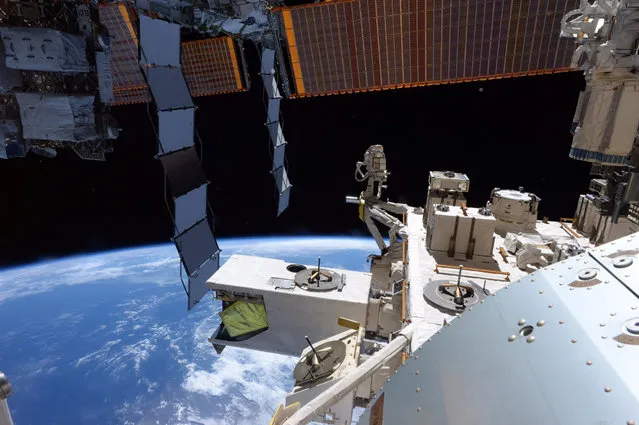
U.S. astronaut Jack Fischer tweeted this image from the space station on June 3, 2017 commenting “Never had a corner office with a view, but I must admit, I like it... a lot!”. (Photo by Jack Fischer/NASA)
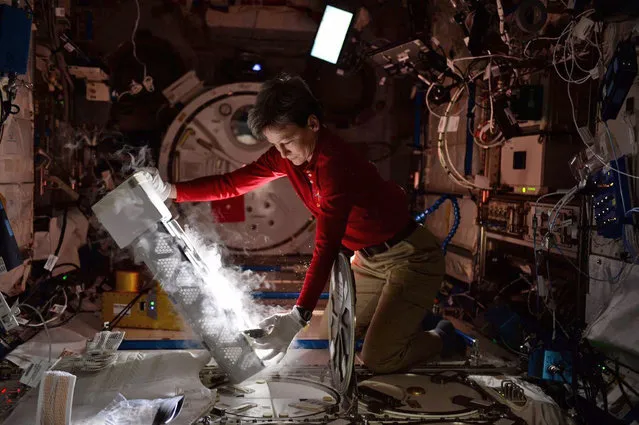
NASA astronaut Peggy Whitson stores blood samples in the ultra-cold freezer on the International Space Station (ISS) for eventual return to Earth in an image released on July 27, 2017. (Photo by NASA)
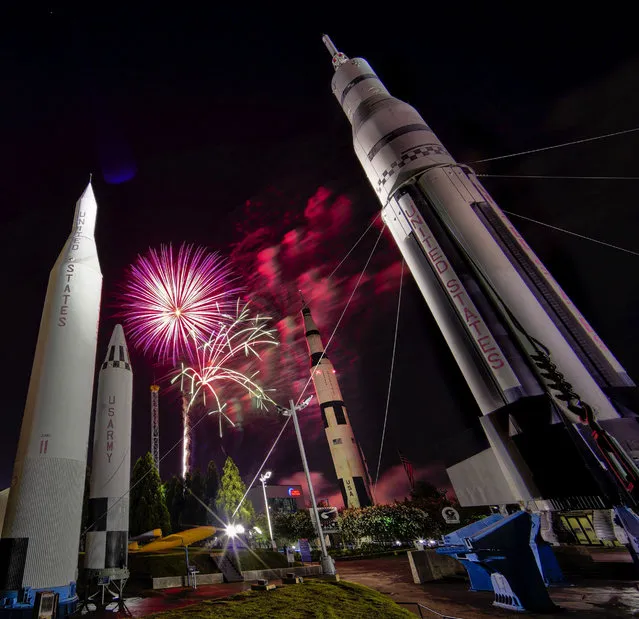
Fireworks explode during Fourth of July celebrations at the U.S. Space & Rocket Center in Huntsville, Ala., Tuesday, July 4, 2017. (Photo by Bob Gathany/AL.com via AP Photo)
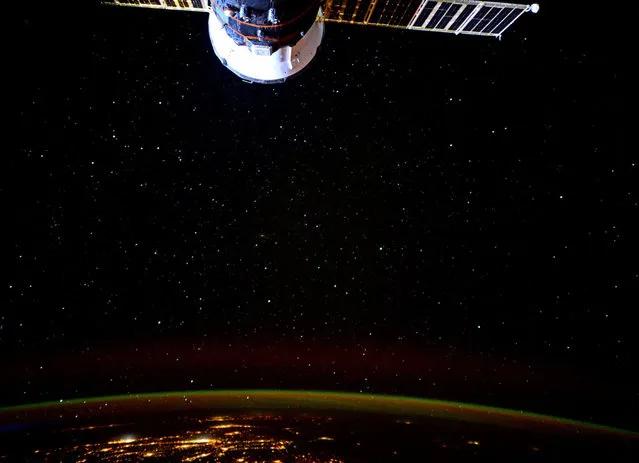
NASA astronaut Jack Fischer tweeted this photo from the space station on July 20, 2017 writing “Said goodbye to a Progress vehicle today and was treated to another beautiful view. Next vehicle brings 3 new crew – can't wait!”. (Photo by Jack Fischer/NASA)
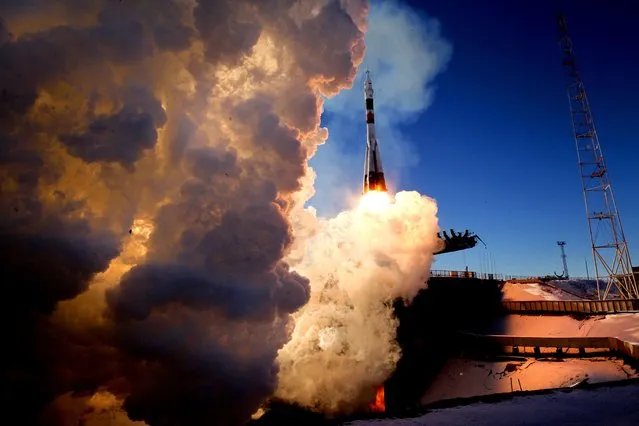
The Russian Soyuz booster rocket FG with Soyuz MS-07 spacecraft lifts off from the launch pad at Baikonur Cosmodrome in Kazakhstan, 17 December 2017, carrying the expedition 54/55 crew members, Roscosmos cosmonaut Anton Shkaplerov, NASA astronaut Scott Tingle and Norishige Kanai of the Japan Aerospace Exploration Agency (JAXA), to the International Space Station (ISS). (Photo by Maxim Shipenkov/EPA/EFE/Rex Features/Shutterstock)
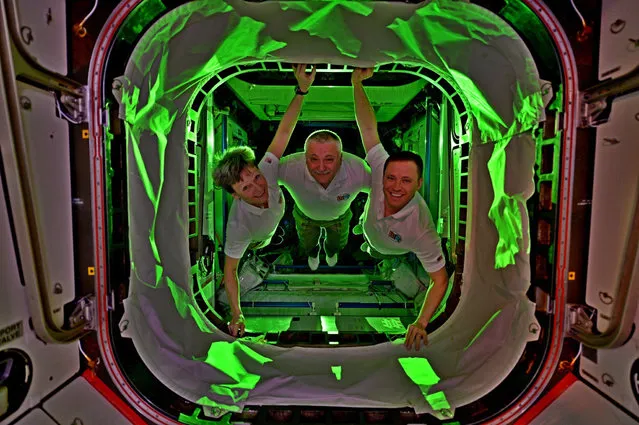
ISS crewmembers, from left, Peggy Whitson, Fyodor Yurchikhin and Jack Fischer pose for a group photo on July 16, 2017. “We decided to play with lights and make our crew picture. Remember black light bowling and roller rinks in the 80s? It's like that – only in space”, said Fischer. (Photo by Jack Fischer/NASA)
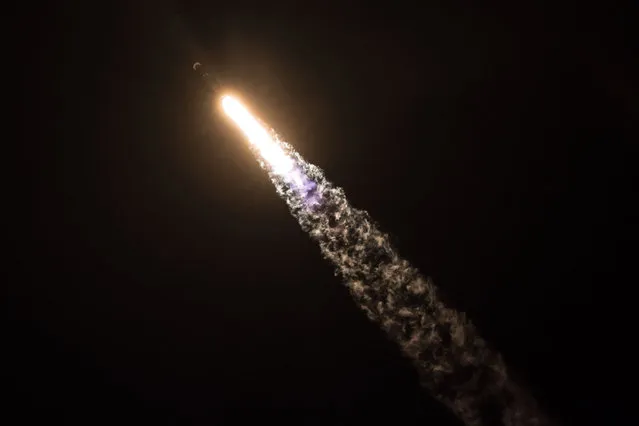
The SpaceX Falcon 9 rocket streaks across the night sky on the secretive Zuma mission from Launch Complex 40 at the Cape Canaveral Air Force Station January 7, 2018 in Cape Canaveral, Florida. The payload was a secret Zuma spacecraft for an un-named U.S. government agency. (Photo by SpaceX)
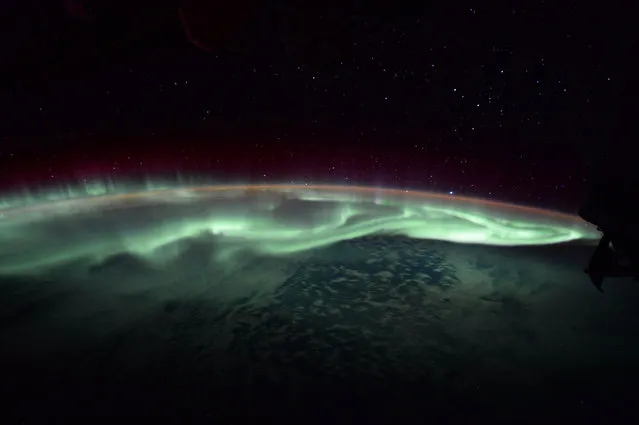
An aurora hovers above the Earth in this image captured aboard the ISS by Jack Fischer and released on July 11, 2017. “One of my favorite things to do in my free time is watch the Aurora – it’s almost alive, as it slathers up the sky in awesome sauce”, wrote Fischer on Twitter. Auroras occur when electrically charged particles from the sun collide with neutral atoms in the upper atmosphere. (Photo by Jack Fischer/NASA)
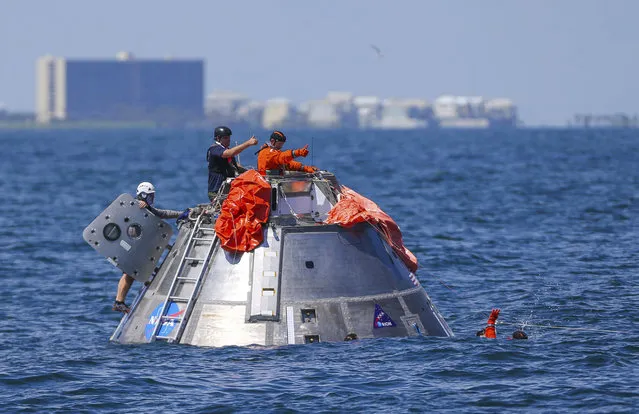
In this Thursday, July 13, 2017 photo, NASA astronaut Victor Glover signals back up to astronaut Daniel Burbank that he is OK after jumping into the Gulf of Mexico from the Orion capsule the astronauts are using to practice an emergency egress situation during recovery testing about four miles off of Galveston Island, Texas. The testing is the first time since the Apollo program that NASA has practiced such egress techniques from a capsule in open water. (Photo by Mark Mulligan/Houston Chronicle via AP Photo)
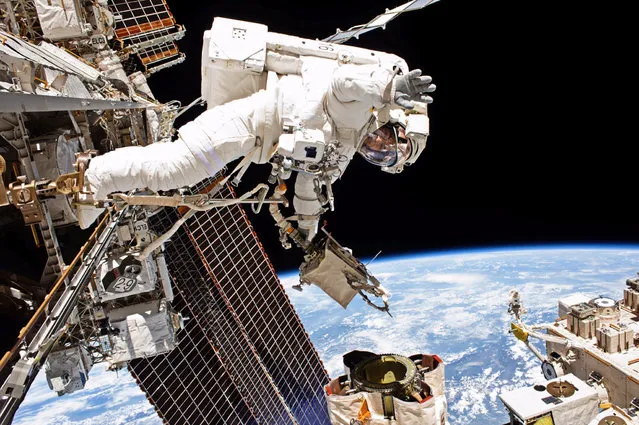
NASA astronaut Mark Vande Hei waves during a spacewalk on Oct. 10 to perform repairs on the International Space Station's robotic arm on October 10, 2017. (Photo by NASA)
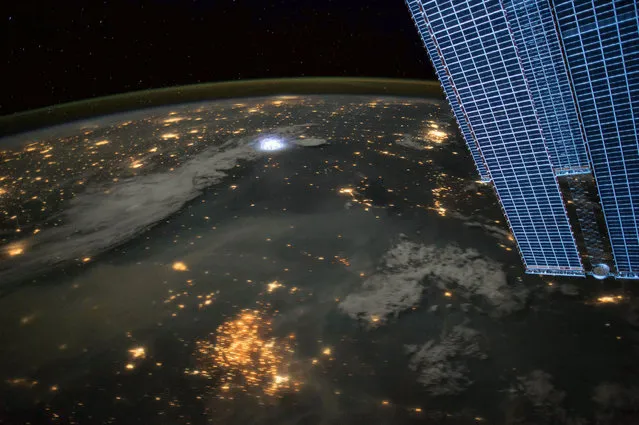
A flash of lightning appears as a white glow in the image captured by Italian astronaut Paolo Nespoli from the International Space Station on October 27, 2017. (Photo by Paolo Nespoli /ESA/NASA)
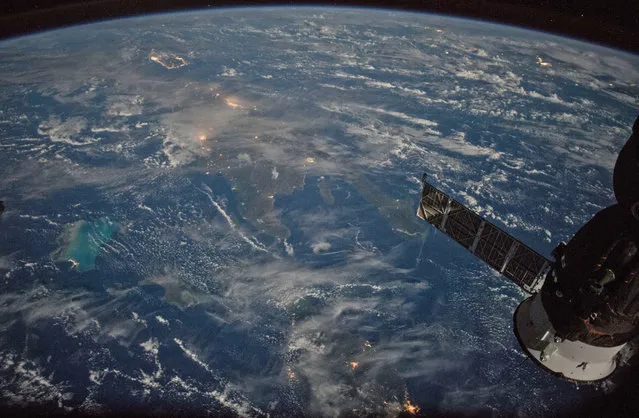
Despite the cloudiness during this nighttime photograph taken by Expedition 54 crew members aboard the International Space Station, the Caribbean islands of (from top left to bottom right) Puerto Rico, Cuba, Haiti and the Dominican Republic are seen from an altitude of 250 miles, January 1, 2018. (Photo by NASA)
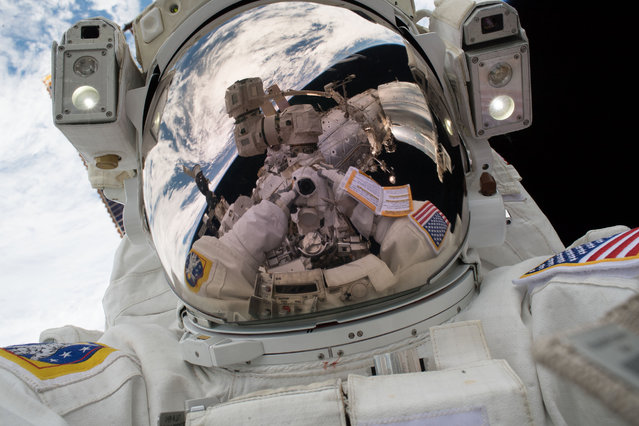
Spacewalker Mark Vande Hei took his own photograph during the first spacewalk of 2018, on January 23, 2018. These sky-high pictures are better known as “space-selfies”. (Photo by Mark Vande Hei/NASA)
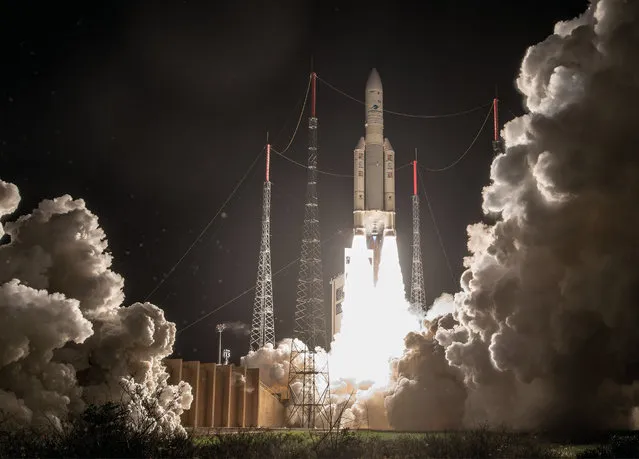
A handout photo made available by the European Space Agency (ESA) and French Centre National d'Etudes Spatiales (CNES) on 26 January 2018 shows an Ariane-5 rocket, carrying the SES-14 and Al Yah 3 television and communication satellites and the NASA “Gold” probe, taking off from its launch pad in Kourou, French Guiana, 25 January 2018. Media reports state that there has been technical problems shortly after the launch when the ground control lost contact with the rocket's upper stage. An “Arianespace” operator spokesperson confirmed the contact-loss but was cited as saying that all missions were going on after the payload satellites had been detected in their orbit positions. (Photo by Jm Guillon/EPA/EFE)
05 Feb 2018 06:27:00,
post received
0 comments
